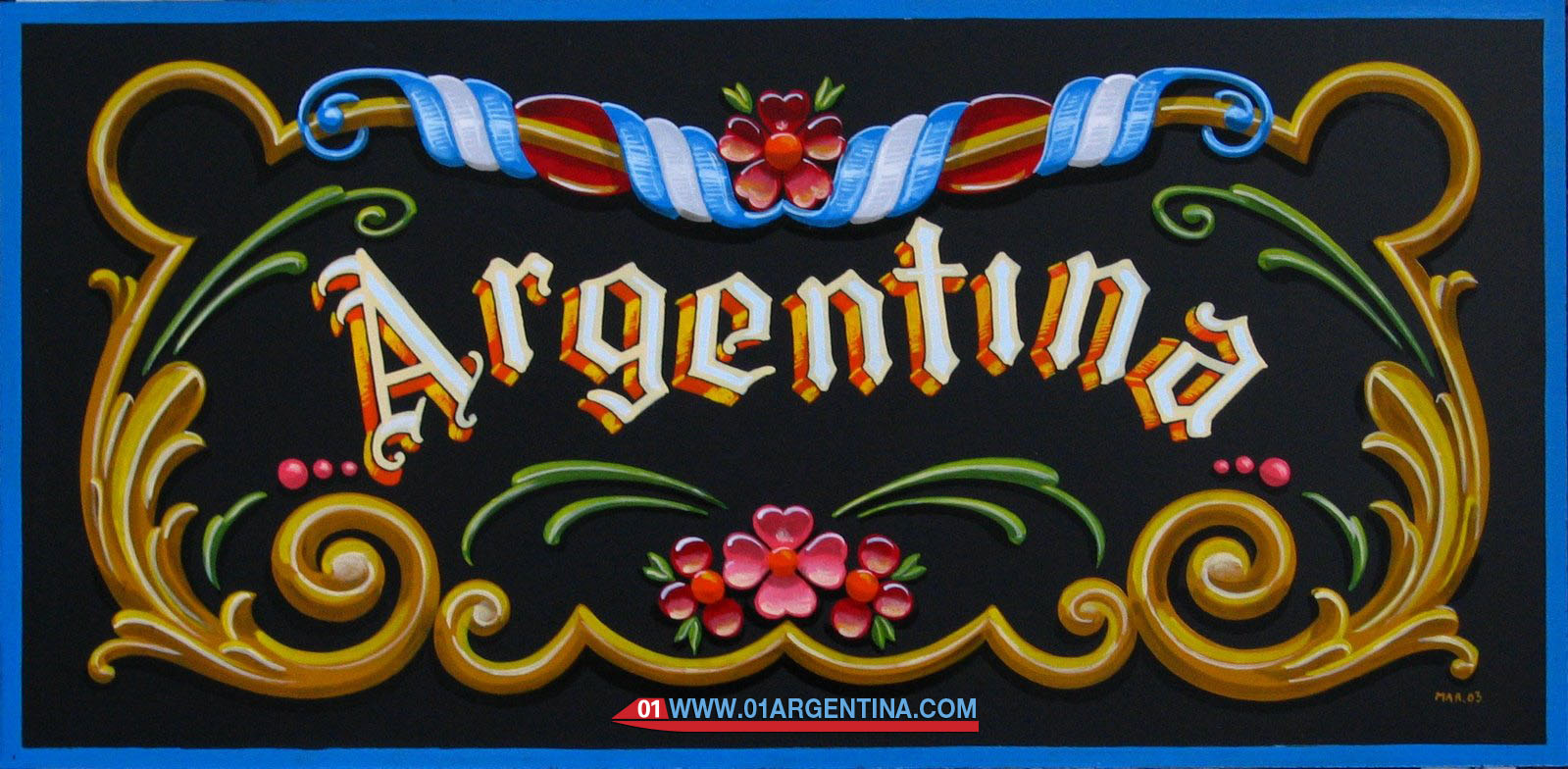
It is a well porteño art. Declared Cultural Heritage of Buenos Aires, the «Fileteado Porteño» is a decorative art and popular that knew the tango-like conquering the world with its vivid colors and shapes.
Considered an iconographic symbol of Argentina’s capital, it has its roots in the early twentieth century when a group of immigrant children experienced coloring wagons were pulled by horses for the distribution of milk, bread, vegetables and other products. The idea was widely accepted and over the years the colorful patterns and forms were printed in most local buses and trams.
In the «Reina del Plata» thousands of foreign tourists contemplate various expressions of Fileteado Porteño in storefronts, trucks, museums, art galleries, collectives and numerous streets. And, after a few years of decline, the drivers of the subject raided and new media spaces. Many fileteadores explayaron their ideas into garments, paintings, bottles, caps cd’s and even the bodies of people under the bodypaiting technique.
In traditional neighborhoods like Abasto, San Telmo and La Boca, there are workshops in which professionals dictate fileteadores intensive classes specially designed for foreign visitors. Spaces in which besides giving the first strokes, history and some of the main players in the Fileteado, who managed to give visibility to an artistic expression that speaks of work, love and family, among its main issues is discovered. In just three hours you can create your own thread to take as a souvenir.
Firuletes, Images and Verses
«Wisdom of the brief» described the famous Argentine writer Jorge Luis Borges referring to Fileteado Porteño. Genre that combines phrases, drawings and lines that become extravagant spirals, colors are always strong and the recurrent use is symmetry, three-dimensional effects with shadows and perspectives, and an eternally overcharged surface.
Identify a thread is quite easy. Enough to have known some of this style to know that this is a work of these characteristics. In many of them, even phrases are added as decorative elements witty, poetic sayings or aphorisms, whether humorous, emotional and even philosophical. Like the tango, repeatedly uses the typical «slang».
The letters used in the threads are very ornate and usually Gothic or italics. As for the images one of the most frequent is that of Carlos Gardel, one of the most important voices of Argentine tango; as well as the Virgin of Luján, the patron saint of travelers; celestial white ribbons, referring to the Argentina flag; and flowers in various forms.
Salvador Venturo, Vicente Brunetti and Cecilio Pascarella: the first fileteadores of Buenos Aires their names are remembered. By all accounts, it was two of them who started this technique in a body shop located on Avenida Paseo Colón current with the idea of giving color to vegetables, traditionally gray.
When the genre took shape and began to shine in all types of vehicles and roads, it is estimated that among the great inspirations were the images of French lyricists, some bars of old houses and various buildings ornamented such as the front of the Cervantes National Theater .
Among the historical events that marked the course of Fileteado figure Porteño first exhibition of its kind in the gallery Wildestein in 1970, whose samples are sighted today at the City Museum (Defensa 219). However, a municipal decree banned five years later the works on public transport, to understand that distracted drivers, and only in 2006 the legislation was repealed.
Filleting IN THE STREETS
One of the neighborhoods of Buenos Aires led the thematic circuit Fileteado is Boedo, highlighting more than 40 plates under this genre, developed by the teacher Luis Zorz, which tell much of the history of the place and its iconic characters more regulars. This feature makes it the Capital of Porteño fillet.
Another representative sites iconographic style is the Museo Carlos Gardel House (Jean Jaures 735), in the neighborhood of Abasto, where some years ago an art contest that left numerous samples in at least six fronts of nearby houses and took developed to called Paseo del Fileteado entire block. also they add to the itinerary neighborhoods of San Telmo and La Boca, where works are sighted in storefronts, galleries, craft stalls, walls and posters.
In workshops Fileteado made theoretical explanations and guided visits demonstration classes. Also for those looking to venture a bit on the technical baseline intensive seminars lasting about three hours, with the painting of a steak table traditional Buenos Aires dictate; and intensive courses, with classes all weekend and delivery of certificates. All September 14 held in Buenos Aires Fileteado Porteño Day, in honor of the first exhibition held in 1970.







